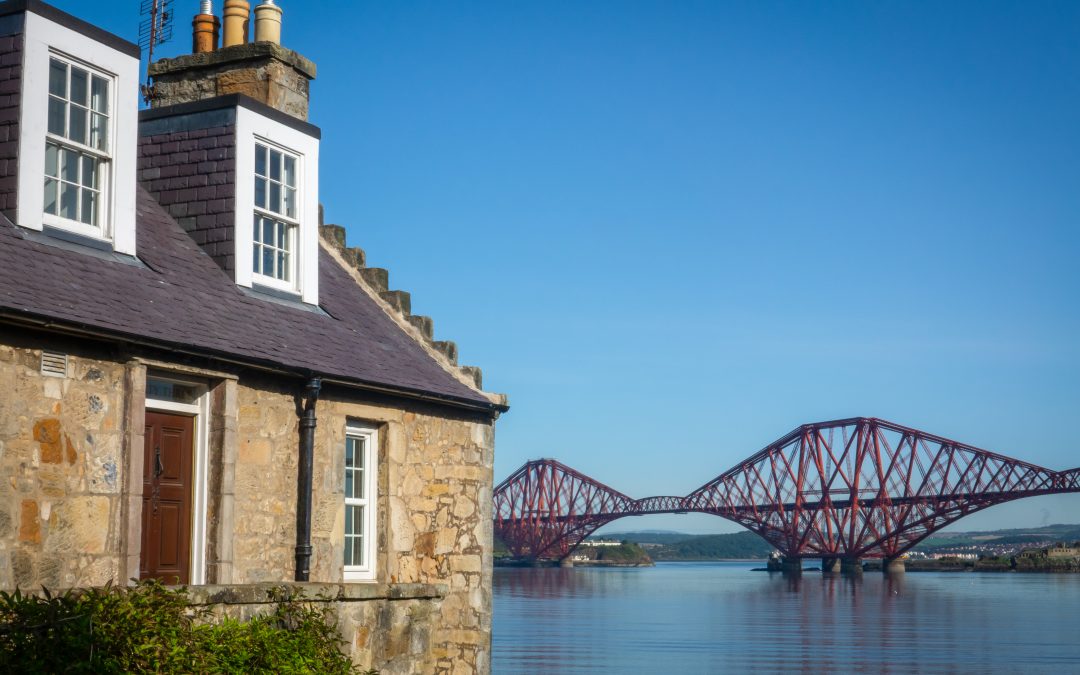The history of West Lothian can be traced back to the Neolithic period, when the first settlers arrived in the area. Over the centuries, the region has been inhabited by various tribes and clans, including the Picts and the Romans. During the Middle Ages, West Lothian was an important centre of trade and commerce, with many towns and villages thriving in the area.
Today, West Lothian is a popular tourist destination, attracting visitors from all over the world who come to explore its rich history and heritage. From its ancient standing stones to its grand castles, the region is a treasure trove of historic sites and landmarks that offer a glimpse into Scotland’s fascinating past. Whether you’re a history buff or simply looking for a unique and memorable holiday experience, West Lothian is a must-visit destination.
Geographical Overview
West Lothian is a historic county situated in the central belt of Scotland. It is bordered by the Firth of Forth to the north, Edinburgh to the east, Lanarkshire to the south, and Falkirk to the west. The county covers an area of approximately 427 square kilometres and has a population of around 180,000 people.
Bathgate and Surrounding Areas
Linlithgow and Surrounding Areas
Linlithgow is a royal burgh located in the eastern part of West Lothian. It is situated on the banks of the River Avon, which flows through the town. The town is located between the Bathgate Hills to the south and the Pentland Hills to the north. The Pentland Hills form part of the Southern Uplands and are the highest range of hills in the county.
Livingston and Surrounding Areas
Livingston is a large town located in the western part of West Lothian. It is situated on the banks of the River Almond, which flows through the county. The Almond is a tributary of the River Forth, which flows into the Firth of Forth to the north of the county. Livingston is surrounded by the Bathgate Hills to the south and the Pentland Hills to the north.
West Lothian is a diverse county with a varied landscape. It is home to several rivers, including the Forth, the Avon, and the Almond. The county is also home to the Bathgate Hills and the Pentland Hills, which offer stunning views of the surrounding countryside. Overall, West Lothian is a beautiful county with a rich history and a vibrant culture.
Historical Overview
West Lothian is a historic county located in southeastern Scotland, bordered by Edinburgh to the east, Falkirk to the north, and the Firth of Forth to the south. The region has a rich and diverse history that dates back to the prehistoric period.
During the Roman period, the Antonine Wall, a defensive barrier built by the Romans to protect their northern frontier, passed through West Lothian. The wall was constructed in AD 142 and stretched from the Firth of Clyde to the Firth of Forth.
In the medieval period, West Lothian was an important region due to its proximity to Edinburgh and the Firth of Forth. The historic town of Linlithgow, located in the heart of the region, was the birthplace of many Scottish monarchs, including Mary Queen of Scots. The town is also home to the impressive Linlithgow Palace, a royal residence that was built in the 15th century.
West Lothian played a significant role in the Wars of Scottish Independence, particularly during the reign of Edward I of England. The town of South Queensferry, located on the shore of the Firth of Forth, was a key strategic location due to its proximity to Edinburgh. The town was also home to the Blackness Castle, a medieval fortress that was built in the 15th century.
During the early modern period, West Lothian was an important industrial region due to its abundant natural resources. The town of Falkirk, located in the northern part of the region, was a hub of industry and commerce, with many coal mines, ironworks, and textile mills.
Today, West Lothian is a vibrant and dynamic region that is home to many historic sites and attractions, including the Hopetoun House, the Binns, and the Dalmeny Estate. The region is also home to many beautiful natural areas, including the Bathgate Hills and the Pentland Hills.
Industrial Revolution and Its Impact
- Armadale
- Fauldhouse
- West Calder
- Uphall
- Broxburn
Cotton mills and paper mills were among the first industries to emerge in West Lothian. Ironstone was also discovered in the region, leading to the establishment of several foundries and brickworks. The arrival of railways in the mid-19th century further boosted the region’s economy, making it easier to transport goods and materials.
Robert Bell, a Scottish entrepreneur, played a critical role in the development of the shale oil industry in West Lothian. His company, the Scottish Shale Oil Company, was responsible for producing more than 90% of the world’s shale oil by the early 20th century. The First World War had a significant impact on the region’s economy, leading to a decline in shale oil production.
Despite this setback, West Lothian’s economy continued to grow, with agriculture and shales becoming increasingly important industries. Limestone and paraffin oil were also discovered in the region, further diversifying the local economy. Today, West Lothian is a thriving region with a rich industrial history that continues to shape its future.
Post-Industrial Era and Modern West Lothian
Bathgate, once a major mining town, saw significant redevelopment in the 1990s with the construction of a new town centre and retail park. Whitburn also underwent significant regeneration during this time, with the creation of new housing and community facilities.
Livingston, a new town built in the 1960s, became the largest town in West Lothian and a major centre for electronics and technology. The town has continued to grow and develop, with the creation of new housing and commercial developments.
West Lothian is now a diverse and thriving council area, with a mix of urban and rural areas. It borders Midlothian, Edinburghshire, Lanarkshire, and the Scottish Borders. The council has invested in new infrastructure and facilities, including new schools, health centres, and sports facilities.
The council has also focused on providing affordable housing, with the construction of new council houses and the implementation of various housing schemes. In recent years, there has been a focus on sustainable development, with the council promoting renewable energy and environmentally-friendly practices.
Population and Demographics
West Lothian is a unitary authority area in Scotland, and according to the latest census conducted in 2021, it has a population of 181,670. The population has been steadily increasing over the years, with an increase of 4.1% since the last census conducted in 2011.
The demographics of West Lothian are diverse, with a range of age groups represented. The largest age group is 30-44, which makes up 23.8% of the population, followed by 45-59, which makes up 22.6% of the population. The smallest age group is 85 and over, which makes up 1.7% of the population.
West Lothian has a slightly higher percentage of females than males, with females making up 50.7% of the population. The area also has a relatively low percentage of non-UK born residents, with only 6.3% of the population being born outside of the UK.
In terms of religion, the majority of the population identifies as Christian, with 51.4% of the population stating this as their religion in the last census. Other religions represented in West Lothian include Islam, Buddhism, and Hinduism.
Cultural Heritage and Attractions
West Lothian has a rich cultural heritage that is reflected in its many attractions. Visitors can explore the area’s history through its museums, local history library, and heritage attractions.
One of the most popular attractions in West Lothian is the Museum of Scottish Railways. The museum features a collection of locomotives, carriages, and other railway artifacts that tell the story of Scotland’s railway history. Visitors can also take a ride on a steam train and experience what it was like to travel by rail in the past.
Another must-visit attraction is the Linlithgow Palace. This historic palace was once the residence of the Scottish monarchs and played an important role in Scottish history. Visitors can explore the palace’s ruins and learn about its fascinating past.
For those interested in local history, the West Lothian Local History Library is a great resource. The library contains a wealth of information about the area’s history, including photographs, books, and other documents.
Tam Dalyell House is another important historical site in West Lothian. This 17th-century mansion was once the home of Tam Dalyell, a prominent Scottish politician. Visitors can tour the house and learn about Dalyell’s life and career.
In addition to these attractions, there are also several heritage sites and parks in West Lothian that are worth a visit. These include the Almondell and Calderwood Country Park, which features beautiful woodland walks and stunning views of the River Almond.
Finally, West Lothian is home to several fire stations that play an important role in the community. These stations are staffed by dedicated firefighters who work tirelessly to keep the area safe.
Notable Personalities
West Lothian has produced many notable personalities throughout history. From politicians to musicians, the region has contributed significantly to Scotland’s cultural and intellectual heritage.
One of the most famous personalities from West Lothian is James Young. Born in Uphall in 1811, Young was a chemist who made significant contributions to the development of the oil industry. He is credited with developing the process of oil refining, which enabled the mass production of kerosene for lamps. Young’s work revolutionized the oil industry and helped to fuel the industrial revolution.
Another notable personality from West Lothian is John Prebble. Born in Shotts in 1915, Prebble was a historian and author who specialized in Scottish history. He wrote several books on the subject, including “Culloden” and “The Highland Clearances,” which are considered classics of Scottish history. Prebble’s work helped to popularize Scottish history and made it accessible to a wider audience.
West Lothian has also produced several famous musicians, including Susan Boyle and Lewis Capaldi. Boyle, who was born in Blackburn in 1961, shot to fame in 2009 after appearing on the television show “Britain’s Got Talent.” Her powerful voice and inspiring story captured the hearts of audiences around the world. Capaldi, who was born in Bathgate in 1996, is a singer-songwriter who has achieved international success with hits like “Someone You Loved” and “Before You Go.”
In the world of politics, West Lothian has produced several notable figures, including Tam Dalyell and Robin Cook. Dalyell, who was born in Edinburgh in 1932 but lived in West Lothian, was a Labour Party politician who served as a Member of Parliament for more than 40 years. He was known for his outspoken views and his opposition to devolution in Scotland. Cook, who was born in Bellshill in 1946, was also a Labour Party politician who served as the UK’s Foreign Secretary from 1997 to 2001. He was a strong advocate for human rights and played a key role in the UK’s intervention in Kosovo.

